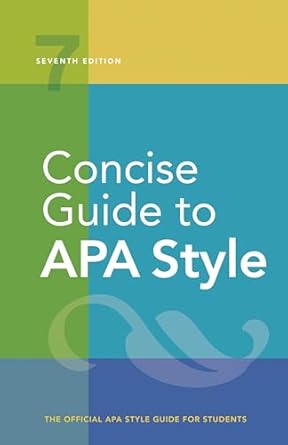[toc]
reverse italics a style guide for clear writing
Concise Guide to APA Style: 7th Edition (OFFICIAL)
Page 121 Review
Understanding Reverse Italics in Academic Writing
In academic writing, especially when adhering to style guides like APA or MLA, clarity and consistency are paramount.
One subtle yet important aspect of formatting is the use of italics, and more specifically, reverse italics.
This technique comes into play when italicized text contains words that would normally be italicized themselves.
What is Reverse Italics?
The provided excerpt clearly defines reverse italicization: “When words that would normally be italicized appear within text that is already italicized, those words should be set in standard (nonitalic) type, referred to as reverse italicization.” Simply put, if you have an italicized title and another title within it, the inner title is presented in standard, non-italicized text.
Example Breakdown
The text offers a practical example to illustrate this concept:
“In Dreaming by the Book: Freud’s The Interpretation of Dreams and the His- tory of the Psychoanalytic Movement, Marinelli and Mayer (2003) explored…”
Here, Dreaming by the Book: Freud’s The Interpretation of Dreams and the History of the Psychoanalytic Movement is the main title, and it’s italicized.
However, within this title lies another title: The Interpretation of Dreams.
Following the rule of reverse italics, The Interpretation of Dreams is presented in standard (non-italicized) font.
Why Use Reverse Italics?
Reverse italics enhance readability and prevent visual clutter.
Imagine if both titles were italicized; it could become confusing and difficult to distinguish between them.
By using reverse italics, the reader can quickly identify the embedded title.
Title Case and Sentence Case
The excerpt also highlights the importance of capitalization:
“In the text, use title case for both titles; in the reference list entry, use sentence case for both titles.”
In the main body of the text, both the outer and inner titles should adhere to title case (where the first letter of each major word is capitalized).
However, in the reference list, both titles should be in sentence case (where only the first word and proper nouns are capitalized).
Reference List Example
The example reference list entry further clarifies this:
“Marinelli, L., & Mayer, A. (2003).
Dreaming by the book: Freud’s The interpretation of dreams and the history of the psychoanalytic movement.
Other Press.”
Notice how “Dreaming by the book” and “The interpretation of dreams” are both in sentence case, even though they were in title case within the main text.
Applying Reverse Italics in Your Writing
When writing academically, pay close attention to titles within titles.
If you find yourself in a situation where you need to italicize a title that already contains a title, remember to use reverse italics.
This demonstrates attention to detail and improves the overall clarity of your writing.
Common Mistakes to Avoid
- Forgetting to use reverse italics: This leads to visual clutter and potential confusion.
- Incorrect capitalization in the reference list: Ensure both titles are in sentence case in the reference list.
- Applying italics incorrectly: Only use italics for titles of works, not for emphasis or other purposes unless specified by your style guide.
Conclusion
Mastering reverse italics is a small but significant step towards producing polished and professional academic writing.
By understanding and applying this rule, you can improve the readability and clarity of your work, ultimately enhancing its impact.
Buy full ebook for only $18: https://www.lulu.com/shop/american-psychological-association/concise-guide-to-apa-style-7th-edition-official/ebook/product-rmzpq54.html?page=1&pageSize=4


Leave a Reply